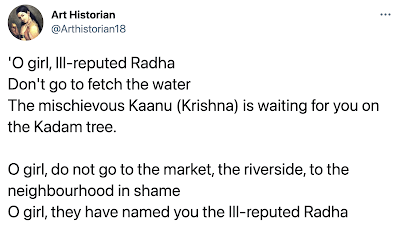Class Procedures and Reminders
Week 3 Reading. In Myth-Folklore you will be choosing from Biblical or Classical stories, and in Indian Epics you will be starting the Ramayana. With your notes, carry on like you did last week, trying to "read like a writer" so that your notes will be able to help you tell your own version of a story later this week, based on this week's reading.
Project stack. Yesterday I replied to the projects people turned in on Friday of last week, and today I'll be working on the projects people turned in on Saturday. You can check the stack at any time to make sure I got your assignment, and I'll keep you posted on my progress each day here in the announcements. My goal is always to get through the stack by the end of the week, but it usually does take me all week to do that.
The following items are for fun and exploration:
And yes, that is where Nagini in the Harry Potter books gets her name; for more about that, see Rob's Storybook, which he has already finished (!), as he started the class early: Voldemort's Nagini.
Plus some music via the master of Indian slide guitar, Joel Veena:
Ragas for Peace and Happiness (Latest) https://t.co/7l5GjBvu2q
— Joel Veena (@Joel_Veena) February 7, 2021
And these African mongooses with a hornbill bird cracked me up:
Funny clip of a dwarf mongoose playing dead for a hornbill. Credit: WildEarth pic.twitter.com/XFD3bO2Orq
— Wonder of Science (@wonderofscience) February 8, 2021
Some of you may have already encountered Devdutt Pattanaik in your reader and research for the India class, so I wanted to share his thoughts here on white appropriations of Indian traditions: Mythology of White Hindus. In particular, he argues that white scholarship tries to standardize the creative multiplicity of Indian traditions, something he also talks about in this TED video: India is not chaotic.
This question of cultural appropriation is very relevant to both of these classes, so as you do your reading and writing for these classes, I hope you will think about cultural appropriation, and also about what it means to engage in respectful and responsible ways with different cultures. You can learn more about that here: Cultural Appropriation for the Worried Writer by Jeannette Ng. This PBS video has some thought-provoking ideas too: What is Cultural Appropriation?
In order to provide you with free reading materials for these classes, I have often relied on public domain materials published before 1923, and that means they reflect deeply racist practices. For example, many of the 19th-century collectors of mythology and folklore did not even credit their sources; the white writers put their own names on the books that they published, and the names of the real artists, the true storytellers, were forever lost. Here's a video with some powerful thoughts from Grace Lin about what it means to both accept and reject these racist books from the past: What to do when you realize classic books from your childhood are racist.
So, I hope you will take some time now and throughout the semester to think about some of these important issues, and also to ponder the question of racism and white supremacy in the Gen. Ed. curriculum here at OU which continues to divide the world up into "Western" and "Other" — a division I find very unhelpful and dangerous. Meanwhile, I'm glad to be teaching courses on both sides of that artificial divide so that I can keep learning new things about the world's many storytelling traditions as a result.
February 9: Paul Laurence Dunbar. Today marks the death in the year 1906 of the great African-American poet Paul Laurence Dunbar. Dunbar was born a free man in Ohio in the year 1872; both of his parents had been slaves. You can read more about his life at Wikipedia, and you can find his poetry at the Lit2Go. I've also included a short video from the Paul Laurence Dunbar House, which is now a historic site in Dayton, Ohio.
Check out the Twitter stream for information and fun stuff during the day, or click here for past announcements.




